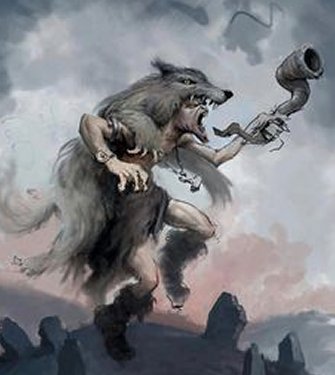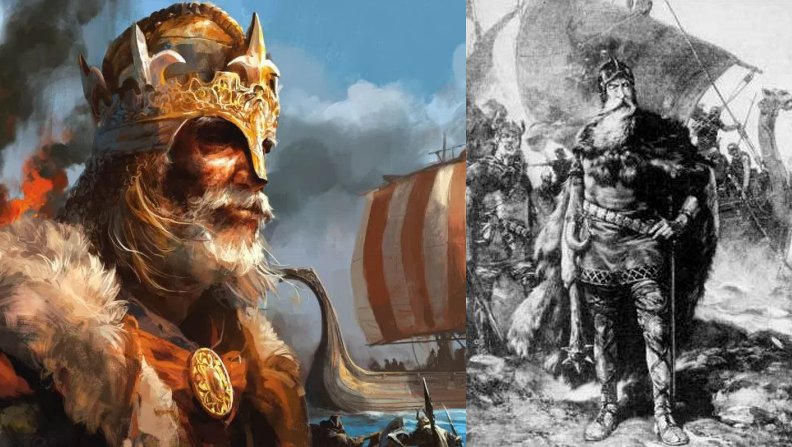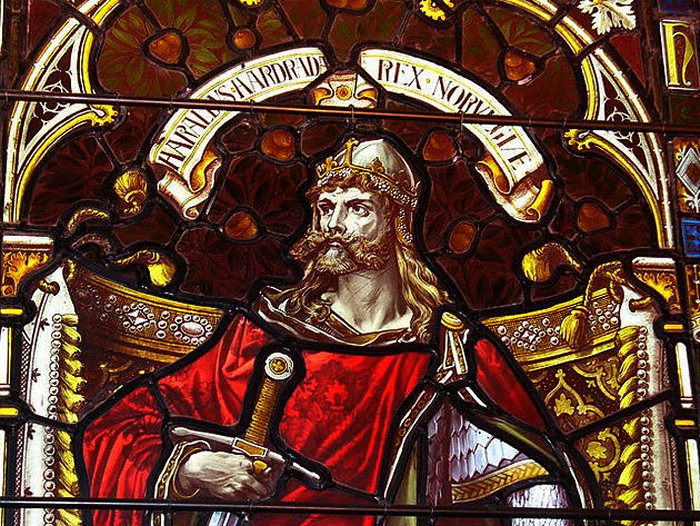Berserkers: Icelandic Viking ‘Mad Warriors’ In The Army Of God Odin
A. Sutherland - AncientPages.com - Icelandic Viking warriors known as ‘berserkers’ (in Old Norse: ‘berserkr’) were feared by enemies and even their battle companions.
These warriors - half-naked and covered in furs - entered into combat in trance, possessed by hatred and blind fury, even without armor or protection. The berserkers did not fear pain and death and they had a strong desire to kill.
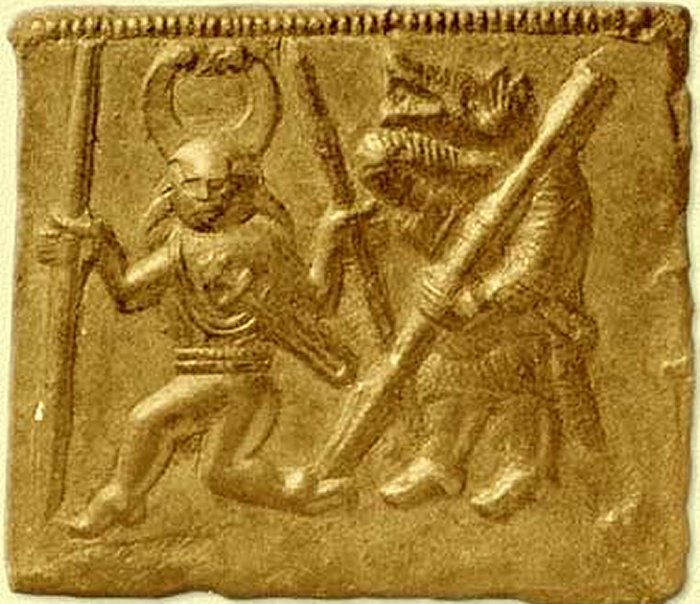
Vendel-period bronze plate discoverd on Öland (Torslunda socken), Sweden. Image credit: Bengans historia sidor_wadbring.com
How did they get the spirit of reckless attack in order to fight madly as they did?
The berserkers are mainly known from Icelandic literature but the most cited source is the "Ynglinga saga" dated to 1220 AD, In his work, Snorri Sturlusson describes berserks as 'mad fighters' without body armor:
"Woden's [Odin's] men went without hauberks and raged like dogs or wolves. They bit their shields and were strong like bears or bulls. They killed men, but neither fire nor iron hurt them…”
See also:
Were The Viking Berserkers True Warriors Or Drug Addicts Fighting In Trance?
Famous Viking Ragnar Lodbrok – Legendary Fearless Sea-King Of The North
Mysterious Jomsvikings: Fearless Scandinavian Warrior-Brotherhood
Vikings: Facts And History About The Tough Norse Seafaring People
What the word ‘berserker’ ("björnsärk") means is uncertain, but one theory proposes a reasonable explanation that the word is related to Odin warrior’s habit of wearing a coat (Old Norse: “serkr”) made from the pelt of a bear (Old Norse: ber-) during their furious battles.
Ivar The Boneless Was A Berserker
Odin’s feared berserkers became a model for later generations of warriors that were insanely brave and feared nothing.
One example can be Ragnar Lodbrok’s son Ivar Ragnarsson widely known as Ivar the Boneless (794-873).
He was exceptionally violent and cruel Viking warlord, reputed to be a berserker.
He was reported to serve as a warrior in Denmark where he was said to lead an army of Berserker warriors.
In the Sagas, Ivar the Boneless is described as being more like a giant than an ordinary man.
His powerful arms were able to carry a bow that was much stronger than those used by other warriors and with heavier arrows.
It happens that not everything that ancient myths and legends tell seems to be only a fantasy.
During an excavation at the churchyard of St. Wystan’s in Repton in Derbyshire, in the East Midlands of England, archaeologists unearthed a skeleton of a 9-foot tall Viking warrior. This discovery made them believe, the remains belong to Ivar the Boneless. Ancient historical sources confirm that in 873, the Great Viking Army led by Ivar Ragnarsson (“the Boneless”) spent the winter in Repton.
Also, the Saga of Ragnar Lodbrok, Ivar’s father, states that Ivar the Boneless was buried in England.
Harald Hardrada Was A Famous Viking Warrior And A Berseker
Another reputed warrior who was believed to be the berserker, was Harald Hardrada “(hard ruler”) officially Harald III Sigurdsson (1015-1066), one of the most famed Viking leaders, who participated in the Battle of Stiklestad in 1030 AD at the age of 15.
Later (but before Hardrada became king of Norway) his Viking army of warriors were employed as protectors of the emperor and Harald became a military commander in Kievan Rus' and of the Varangian Guard in the Byzantine Empire.
Old customs and beliefs in powerful berserkers also survived in the famous medieval legend of Beowulf. Beowulf, a ‘prince of the Geats’ of southern Sweden, arrived with a small group of warriors ready to get rid of Grendel, an evil man-eating monster that is half-man and half-fiend.
To meet the monster on its own terms, he threw off his helmet, (“hauberk”) and sword, but still, his strength was that of thirty men, and he killed Grendel by pulling off one of the monster’s arms.
However, in its later, more Christianized version, mighty Beowulf trusts in God's power, not in strength coming from his altered state of mind, as did Odin’s brave warriors in the past.
Written by – A. Sutherland AncientPages.com Staff Writer
Copyright © AncientPages.com All rights reserved. This material may not be published, broadcast, rewritten or redistributed in whole or part without the express written permission of AncientPages.com
Expand for referencesReferences:
D. Clark,N. Perkins, Anglo-Saxon Culture and the Modern Imagination
Hightower, L. The Vikings: Raiders
Brownworth, L. The Sea Wolves
More From Ancient Pages
-
 Archaeologists to revisit Fort Rock Cave, Oregon – site of the world’s oldest sandals
Artifacts | Aug 27, 2015
Archaeologists to revisit Fort Rock Cave, Oregon – site of the world’s oldest sandals
Artifacts | Aug 27, 2015 -
 65 Byzantine-Era Tombs Unearthed In Stratonikeia – World’s Largest Marble City
Archaeology | Feb 24, 2017
65 Byzantine-Era Tombs Unearthed In Stratonikeia – World’s Largest Marble City
Archaeology | Feb 24, 2017 -
 On This Day In History: Macbeth, King of Scots Killed At The Battle Of Lumphanan – On August 15, 1057
News | Aug 15, 2016
On This Day In History: Macbeth, King of Scots Killed At The Battle Of Lumphanan – On August 15, 1057
News | Aug 15, 2016 -
 Bona Sforza – Ambitious Queen Of Poland Was Betrayed And Murdered
Featured Stories | Jan 21, 2019
Bona Sforza – Ambitious Queen Of Poland Was Betrayed And Murdered
Featured Stories | Jan 21, 2019 -
 Four Canopic Jars Dated To The 26th Dynasty Unearthed At South Asasif Necropolis, Luxor
Archaeology | Jun 27, 2018
Four Canopic Jars Dated To The 26th Dynasty Unearthed At South Asasif Necropolis, Luxor
Archaeology | Jun 27, 2018 -
 4,000-Year-Old Lunar Calendar Developed At Kokino Megalithic Observatory – Evidence Of Remarkable Astronomical Knowledge
Archaeoastronomy | Jan 9, 2021
4,000-Year-Old Lunar Calendar Developed At Kokino Megalithic Observatory – Evidence Of Remarkable Astronomical Knowledge
Archaeoastronomy | Jan 9, 2021 -
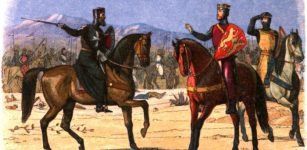 First Crusade Was Launched In 1095
Ancient History Facts | Jun 19, 2018
First Crusade Was Launched In 1095
Ancient History Facts | Jun 19, 2018 -
 ‘Something’ Ancient And Strange Was Found Hidden Inside A Huge Underground Structure – What Happened Next Is A Mystery
Ancient Mysteries | Nov 8, 2023
‘Something’ Ancient And Strange Was Found Hidden Inside A Huge Underground Structure – What Happened Next Is A Mystery
Ancient Mysteries | Nov 8, 2023 -
 Cosmic Message Of The Zapotec Glyphs In The Valley Of Oaxaca – Deciphered!
Archaeology | Mar 10, 2022
Cosmic Message Of The Zapotec Glyphs In The Valley Of Oaxaca – Deciphered!
Archaeology | Mar 10, 2022 -
 Drinking Horn: Important Yule Symbol And Its Connection To Biblical Magi And Christmas
Christmas Traditions | Dec 25, 2024
Drinking Horn: Important Yule Symbol And Its Connection To Biblical Magi And Christmas
Christmas Traditions | Dec 25, 2024 -
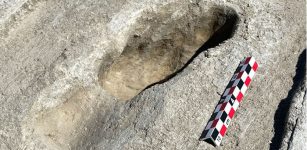 88 Ice Age Human Footprints In Utah Desert Shed New Light On Ancient Americans
Archaeology | Aug 11, 2022
88 Ice Age Human Footprints In Utah Desert Shed New Light On Ancient Americans
Archaeology | Aug 11, 2022 -
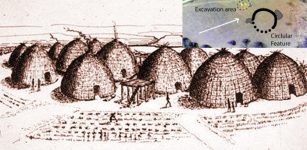 Large Earthwork At Wichita Site In Kansas – Is It Long-Lost Native American City Of Etzanoa?
Archaeology | Sep 4, 2020
Large Earthwork At Wichita Site In Kansas – Is It Long-Lost Native American City Of Etzanoa?
Archaeology | Sep 4, 2020 -
 Secrets Of The Cathars – Mysterious Manuscript Of Jesus And His Pre-Flood Language
Featured Stories | Jan 18, 2019
Secrets Of The Cathars – Mysterious Manuscript Of Jesus And His Pre-Flood Language
Featured Stories | Jan 18, 2019 -
 10 Magnificent Ancient Libraries
Featured Stories | Feb 6, 2016
10 Magnificent Ancient Libraries
Featured Stories | Feb 6, 2016 -
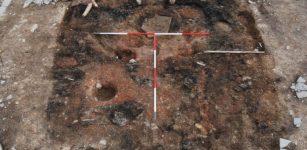 Scotland’s First Farmers Didn’t Need Manure To Fertilize Their Fields – The Land Was Still Very Productive
Archaeology | Oct 12, 2022
Scotland’s First Farmers Didn’t Need Manure To Fertilize Their Fields – The Land Was Still Very Productive
Archaeology | Oct 12, 2022 -
 Surprising Discovery – Replica In The Field Museum Is A 3,000-Year-Old Sword
Artifacts | Jan 18, 2023
Surprising Discovery – Replica In The Field Museum Is A 3,000-Year-Old Sword
Artifacts | Jan 18, 2023 -
 On This Day In History: Napoleon Bonaparte Dies In Exile – On May 5, 1821
News | May 5, 2016
On This Day In History: Napoleon Bonaparte Dies In Exile – On May 5, 1821
News | May 5, 2016 -
 Shining Swords: Magical Artifacts That Symbolized Power, War, Punishment And Righteousness
Featured Stories | Nov 20, 2024
Shining Swords: Magical Artifacts That Symbolized Power, War, Punishment And Righteousness
Featured Stories | Nov 20, 2024 -
 Ancient DNA Reveals Irish Are Not Celts – Irish Ancestors Came From Biblical Lands – Scientists Say
Archaeology | Mar 30, 2020
Ancient DNA Reveals Irish Are Not Celts – Irish Ancestors Came From Biblical Lands – Scientists Say
Archaeology | Mar 30, 2020 -
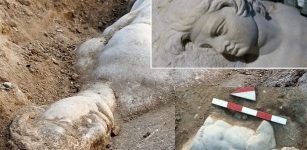 1,800-Year-Old Relief Of Mythological Satyr Figure Under Restoration
Artifacts | Sep 5, 2020
1,800-Year-Old Relief Of Mythological Satyr Figure Under Restoration
Artifacts | Sep 5, 2020

